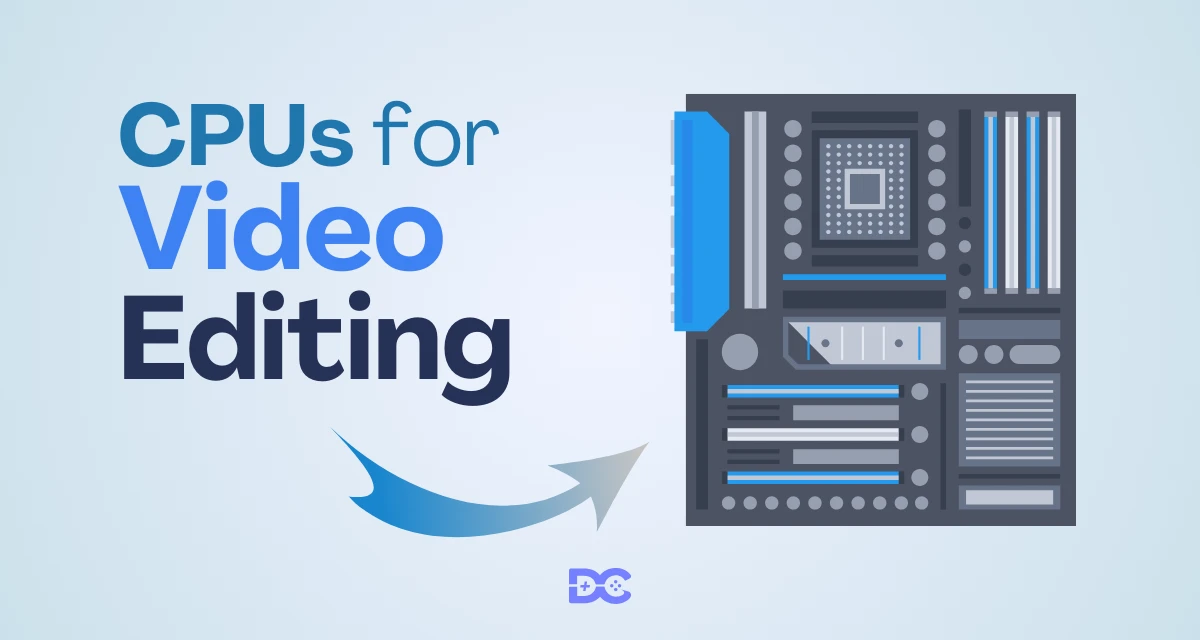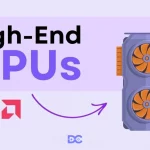Video editing is a crucial aspect of digital content creation, requiring both creativity and technical proficiency. A significant component in achieving the best results is the Central Processing Unit (CPU), which is responsible for the performance of your editing system.
Whether you are previewing your video on the timeline or pressing space to see the output, your computer stops to handle the request. You may use a better GPU to improve rendering, but for video editors who spend hours editing a project, the experience on canvas & timeline matters more than rendering.
While previewing your video on the timeline or pressing the spacebar to view the output, your computer pauses to process the request. By utilizing a more advanced GPU, you can enhance the rendering performance.
However, for video editors dedicating hours to editing a project, the smoothness of the canvas and timeline experience takes priority over rendering capabilities.

The world of CPUs has become more complex, with a range of options available, each offering different benefits. This guide aims to simplify the process of choosing the best CPU for video editing by comparing the top contenders from Intel and AMD.
We will consider factors such as core count, thread performance, software compatibility, and value for money. By the end of this guide, you will have the necessary knowledge to make an informed decision and ensure that your investment meets your video editing needs and expectations.
Whether you’re a professional or a beginner, we’ve got you covered in this post.
Let’s explore the empire of high-performance CPUs and find a flawless processor that aligns with your video editing initiatives in the coming year.
Key Benefits of CPUs for Video Editing
- Fast Rendering: High-performance CPUs can render videos faster, thus making the video editing process more efficient.
- Smooth Playback: A good CPU ensures seamless video playback during the editing phase, reducing lag and stuttering in the preview.
- Improved Multitasking: Video editing often involves running multiple tasks or applications simultaneously. A robust CPU can handle various tasks without slowing down, thereby enhancing the editing process.
- High-Quality Effects: Advanced effects and transitions require heavy computation. A powerful CPU can handle them more efficiently.
- Color Grading and Correction: In-depth color grading and correction are CPU-intensive tasks. A strong CPU can process these adjustments faster.
- Handling High-Resolution Footage: High-definition and 4K video files require more advanced CPUs to handle the larger file size and higher detail.
- Longevity: A high-performance CPU will be able to handle new and heavier software updates for a longer time, making it a wise investment.
- Fast Export: Exporting the final edited video is a CPU-intensive task as well. A capable CPU can significantly speed up this process.
Developing Demands of Video Editing
High-resolution footage and its impact:
- With the advent of technologies like 4K and 8K, video content is now produced in higher resolutions, resulting in more detailed and more explicit visuals.
- This shift to high-resolution footage places a greater demand on the processing capabilities of editing systems, requiring more powerful CPUs to handle the increased data and maintain smooth editing performance.
The need for faster rendering times:
- Rendering is the process of generating the final video output from edited footage. As projects involve more intricate edits and higher resolutions, the time required for rendering also increases.
- Editors now demand faster rendering times to reduce waiting periods and enhance workflow efficiency. A CPU with higher clock speeds and efficient processing becomes crucial to achieve quicker rendering without compromising quality.
Importance of multitasking capabilities:
- Video editing involves a multitude of tasks simultaneously, such as cutting, color grading, and audio editing. Multitasking capabilities refer to a CPU’s ability to handle multiple processes at the same time.
- The section emphasizes the significance of CPUs with strong multitasking capabilities. This ensures that editors can seamlessly switch between various editing tasks without experiencing performance lags, contributing to a more efficient and streamlined editing process.
Critical Considerations in CPU Selection

Clock Speed and its Impact on Editing Performance:
Clock speed refers to how fast a CPU can execute instructions per second, measured in gigahertz (GHz). In video editing, higher clock speeds generally lead to faster processing of individual tasks.
When editing videos, tasks like applying effects, transitions, or rendering benefit from a higher clock speed as it allows these processes to be completed more quickly. A CPU with a higher clock speed is crucial for reducing the time it takes to perform these operations, contributing to an overall smoother editing experience.
Core Count and Parallel Processing:
Core count refers to the number of processing units within a CPU. In video editing, a higher core count enables the CPU to handle multiple tasks simultaneously. Video editing software often supports parallel processing, where different cores can work on separate tasks concurrently.
For example, while one core is rendering a video, another core can be used for real-time playback or applying effects. A CPU with more cores is advantageous for multitasking during the editing process, significantly improving efficiency and reducing the time required for complex edits.
Compatibility with Editing Software:
Compatibility with editing software is a critical factor in CPU selection. Different video editing applications may have specific requirements or optimizations for certain CPU architectures.
Choosing a CPU that works seamlessly with the editing software you plan to use is essential. Compatibility ensures that you can take full advantage of the CPU’s capabilities and that the software can efficiently utilize the processing power provided by the CPU.
Before making a purchase, it’s advisable to check the recommended system requirements of your chosen editing software and ensure they align with the specifications of the CPU you intend to use.
Compatibility with Motherboard
If you already have a motherboard or, in other words, are looking to buy a CPU for the existing motherboard, then you should check the CPU compatibility with your motherboard. Your motherboard should have the socket to support the CPU. Your old motherboard may not be compatible with the latest CPUs.
The Best CPUs to Consider in 2025
Before we begin, let me share with you the recommended CPU requirement for the industry-leading video editing software.
- Intel 11th Generation or newer CPU with Quick Sync – or AMD Ryzen 3000 Series, Threadripper 2000 series, or newer CPU
The above is the recommended CPU requirement for Premiere Pro, so any processor with more than that capability will suffice for all your video editing requirements.
Intel Core i9-13900K
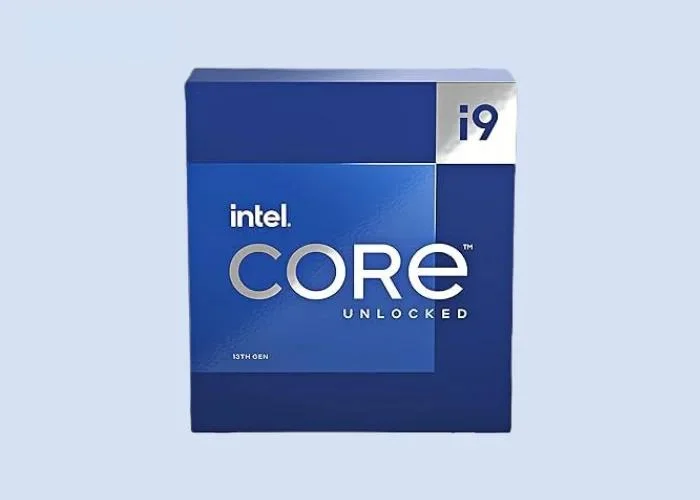
The Intel Core i9-13900K is a high-performance processor from Intel’s 13th generation Alder Lake series. Tailored for enthusiasts and professionals, it boasts a robust core and thread count, elevated clock speeds (especially with its unlocked “K” designation for overclocking), ample cache for quick data retrieval, and potentially integrated graphics.
These are very minor differences in i9 13900k & i9 14900k, and those too are unnoticeable. The AI and bit of clock speed are enhanced in the 14th gen. Keep in mind that you may require a compatible motherboard for i9 13900k, considering the power and support it needs.
The i9 series is renowned for its multitasking prowess and suitability for demanding computing tasks, making it a top choice for users seeking exceptional processing power.
Suggestion:
The below MotherBoard and GPU are the best for Intel Core i9-13900K, which makes its performance high.
- Motherboard: ASUS ROG Maximus Z790 Hero, MSI MPG Z790 Tomahawk WiFi
- GPU: NVIDIA GeForce RTX 4090, NVIDIA GeForce RTX 4070ti
| Feature | Specification |
|---|---|
| Launch Date | Q4’22 |
| Integrated GPU | Intel® UHD Graphics 770 |
| Clockspeed (Base) | 3.0 GHz |
| Clockspeed (Max, Boost) | Up to 5.8 GHz (Max Precision Boost) |
| Lithography | 7nm |
| Max Power | 253 Watts |
| Memory | DDR5 5600 MT/s and DDR4 3200 MT/s |
| Cores and Threads | 24 Cores, 32 Threads |
| L3 Cache | 36 MB |
| Socket | LGA 1700 |
AMD Ryzen 9 5950X

The AMD Ryzen 9 5950X is a high-end CPU known for its exceptional performance in handling resource-intensive tasks. With 16 cores and 32 threads, it’s a powerhouse that excels in demanding video editing scenarios.
Its multi-core capability allows for seamless processing of complex edits, making it a top choice for professionals dealing with high-resolution footage and intricate projects.
AMD processors are not only for gaming but are also suitable for creators. Ryzen’s 5950x is a powerful contender that beats most intel processors in terms of performance and affordability.
AMD processors are also power efficient and work closely with the graphic cards to give users a seamless gaming experience. However, due to value sentiments, most people tend to choose Intel over AMD.
Suggestion:
This MotherBoard and GPU are the best for AMD Ryzen 9 5950X, which makes its performance high.
- Motherboard: Gigabyte X570 AORUS Master, ASUS ROG Crosshair VIII Dark Hero
- GPU: RTX 3070, RX 6700 XT, RTX 3080 Ti
| Feature | Specification |
|---|---|
| Launch Date | November 5, 2020 |
| Integrated GPU | None (Requires dedicated graphics card) |
| Clockspeed (Base) | 3.4 GHz |
| Clockspeed (Max, Boost) | Up to 4.9 GHz (Max Precision Boost) |
| Lithography | 7nm |
| Max Power | 105 Watts |
| Memory | Dual-channel DDR4-3200 |
| Cores and Threads | 16 Cores, 32 Threads |
| L3 Cache | 64 MB |
| Socket | AM4 |
Intel Core i9-12900K
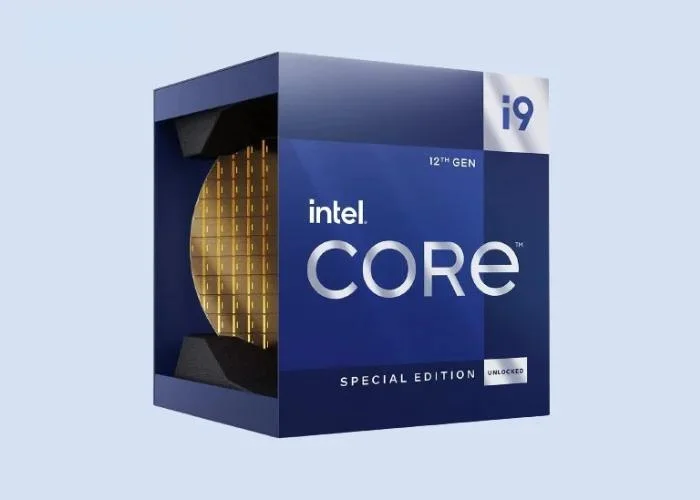
The Intel Core i9-12900K is a processor that pushes the boundaries of editing speed. Its unique core configuration, including both high-performance and high-efficiency cores, enables it to deliver remarkable performance.
This CPU is designed to handle multitasking with ease, making it an excellent choice for video editors who require swift rendering times and efficient workflow.
Packed with 16 cores and 24 threads, the CPU offers unbeatable performance in video editing. It can run software like Premiere Pro, Davinci Resolve, After Effects, Camtasia & Lightworks pretty smoothly.
Suggestion:
This MotherBoard and GPU are the best for Intel Core i9-12900K, which makes its performance high.
- Motherboard: ASUS ROG Maximus Z690 Hero, MSI MPG Z690 Carbon WiFi
- GPU: NVIDIA GeForce RTX 3080, AMD Radeon RX 6700 XT
| Feature | Specification |
|---|---|
| Launch Date | November 2021 |
| Integrated GPU | Intel Xe Graphics (32 EUs) |
| Clockspeed (Base) | 3.2 GHz |
| Clockspeed (Turbo) | 5.2 GHz (1-2 cores), 5.0 GHz (3-8 cores) |
| Overclocking Support | Yes |
| Lithography | 10nm SuperFin |
| Max Power | 241W |
| Memory Support | DDR5-6400, DDR4-6400 |
| Cores/Threads | 16 Cores / 24 Threads |
| L3 Cache | 30 MB |
| Socket | LGA 1700 |
AMD Ryzen 7 5800X
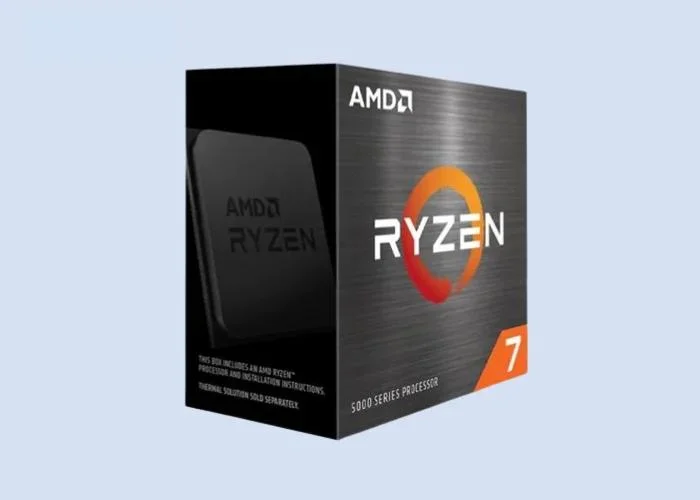
The AMD Ryzen 7 5800X strikes a balance between performance and cost, making it an attractive choice for users on a budget. With 8 cores and 16 threads, it offers commendable processing power without breaking the bank.
This CPU is ideal for those who seek a cost-effective solution without compromising significantly on editing capabilities.
Suggestion:
This MotherBoard and GPU are the best for AMD Ryzen 7 5800X, which makes its performance high.
- Motherboard: MSI MAG X570 Tomahawk WIFI, ASUS ROG Strix X570-E Gaming WIFI
- GPU: NVIDIA GeForce RTX 4080, NVIDIA GeForce RTX 3070 Ti
| Parameter | Information |
|---|---|
| Launch Date | November 5, 2020 |
| Integrated GPU | None |
| Clockspeed (Base) | 3.8 GHz |
| Clockspeed (Max, OC) | 4.7 GHz |
| Lithography | 7nm |
| Max Power | 105 Watts |
| Memory | DDR4-3200 (Dual Channel) |
| Cores and Threads | 8 Cores, 16 Threads |
| L3 Cache | 32 MB |
| Socket | AM4 |
Intel Core i5-12600K
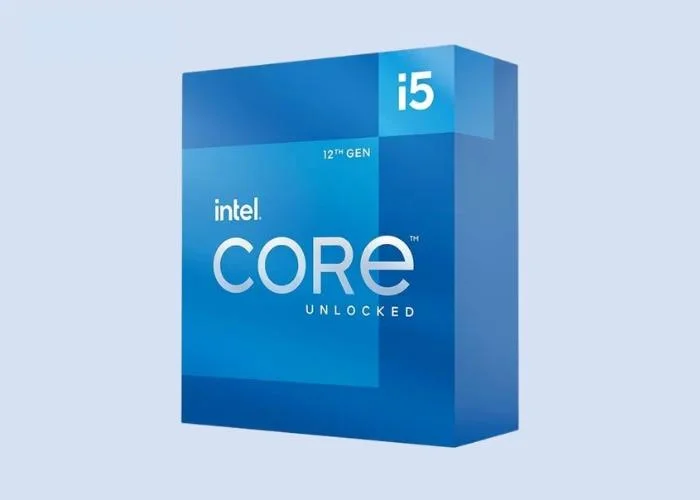
Positioned as a solid mid-range option, the Intel Core i5-12600K is designed to cater to users with moderate editing needs. Its combination of performance and affordability makes it an appealing choice for those looking for a reliable CPU that can handle video editing tasks without stretching the budget.
This CPU is well-suited for users who engage in video editing as a hobby or as part of their routine without requiring extreme processing power.
Suggestion:
This MotherBoard and GPU are the best for Intel Core i9-12900K, which makes its performance high.
- Motherboard: MSI MPG Z690 Carbon WiFi, ASUS ROG Strix Z690-F
- GPU: NVIDIA GeForce RTX 3070 Ti, NVIDIA GeForce RTX 3080 Ti
| Parameter | Specification |
|---|---|
| Launch Date | Q4 2021 |
| Integrated GPU | Intel UHD Graphics 770 |
| Clockspeed (Base) | 3.7 GHz |
| Clockspeed (Max Turbo) | 4.9 GHz |
| Lithography | 10nm SuperFin |
| Max Power | 150 Watts |
| Memory Support | DDR4-3200, DDR5-6400 (Dual-channel) |
| Cores and Threads | 10 Cores, 16 Threads |
| L3 Cache | 12 MB |
| Socket | LGA 1700 |
Overcoming Common Challenges

Video editing, especially with high-resolution content, can present challenges that impact both performance and user experience. Addressing these challenges is crucial for ensuring a smooth and efficient editing process.
Cooling Solutions for Extended Editing Sessions
Intensive video editing tasks can put a significant strain on your CPU, leading to increased heat generation. To overcome this, it’s essential to implement effective cooling solutions. Investing in a high-quality cooling system, such as liquid cooling or advanced air cooling, helps dissipate heat efficiently, preventing thermal throttling and ensuring sustained performance during extended editing sessions.
Cooling solutions also contribute to the longevity of your CPU, preventing overheating-related damage. Regular maintenance, such as cleaning dust from cooling components, further enhances the effectiveness of these solutions.
Compatibility Issues and Troubleshooting Tips
As the software and hardware landscape evolves, users may encounter compatibility issues between their chosen CPU and other components or software applications. To overcome these challenges, consider the following troubleshooting tips:
- Update Drivers and Firmware: Ensure that all device drivers, including those for your CPU and other hardware components, are up to date. Manufacturers often release updates to improve compatibility and address known issues.
- Check Software Updates: Keep your editing software and operating system up to date. Developers frequently release updates to enhance performance, introduce new features, and address compatibility issues.
- Verify Hardware Compatibility: Before making a purchase, confirm that your chosen CPU is compatible with your motherboard, RAM, and other essential components. Check the manufacturer’s specifications and compatibility lists to avoid any surprises.
- Community Forums and Support: Online forums and communities often provide valuable insights into common compatibility issues. Engage with the community to seek advice, share experiences, and find solutions to specific problems.
- Test in Stages: When upgrading or building a new system, test components in stages. This approach allows you to identify the source of compatibility issues more easily. Start with essential components and gradually add others while monitoring for any issues.
Case Studies: Professional Editors Speak

Insights from Industry Professionals Using Specific CPUs:
- Purpose: This part aims to provide firsthand accounts from professionals who actively use specific CPUs in their day-to-day video editing tasks.
- Approach: We interview professionals from diverse backgrounds in the video editing field, such as film editors, content creators, and multimedia specialists.
- Content: The professionals share their experiences, opinions, and perspectives on how the chosen CPUs have influenced their editing processes.
Real-World Applications and Success Stories:
- Purpose: This section is dedicated to showcasing practical applications of the selected CPUs, emphasizing real-world scenarios where these processors have excelled.
- Approach: We present case studies that highlight successful projects, creative achievements, and notable accomplishments attributed to the use of specific CPUs.
- Content: The narratives include details on challenges overcome, improvements in efficiency, and any distinctive features of the CPUs that contributed to the success of the projects.
FAQs
What factors should I consider when choosing a CPU for video editing?
Consider factors such as clock speed, core count, compatibility with editing software, and future-proofing capabilities to ensure a smooth video editing experience.
Is a higher core count always better for video editing CPUs?
Not necessarily. While a higher core count can improve multitasking, the overall performance depends on a balance of factors, including clock speed and software optimization.
Do I need a dedicated GPU for video editing, or is a powerful CPU sufficient?
Both CPU and GPU play crucial roles in video editing. While a powerful CPU is essential, a dedicated GPU can significantly enhance rendering and playback performance.
How can I address overheating issues during extended video editing sessions?
Invest in effective cooling solutions, such as advanced air or liquid cooling systems. Proper ventilation in your workspace is also important to dissipate heat.
Are there any budget-friendly CPUs that offer good performance for video editing?
Yes, CPUs like the AMD Ryzen 7 5800X and Intel Core i5-12600K provide a balanced mix of performance and affordability, making them suitable for budget-conscious editors.
How important is RAM in conjunction with the CPU for video editing performance?
RAM is crucial for smooth video editing. A balance between CPU and RAM ensures efficient handling of large video files and complex editing tasks.
How can I future-proof my video editing system when choosing a CPU?
Opt for CPUs with a good balance of current performance and the ability to handle upcoming software updates. Consider technological advancements and ensure compatibility with evolving industry standards.
Conclusion
In conclusion, choosing the right CPU for video editing in 2025 is a pivotal decision, shaping the efficiency and creativity of the process. The journey explored the escalating demands of video editing, emphasizing factors like high resolution and multitasking capabilities.
Top CPUs, including the AMD Ryzen 9 5950X and Intel Core i9-12900K, showcased diverse options, while budget-friendly choices like the AMD Ryzen 7 5800X were considered.
Future-proofing advice, real-world performance insights, and expert recommendations provided a comprehensive guide. Overcoming challenges, a buyer’s guide, and the importance of staying updated rounded out the exploration.
As we part ways, remember that the best CPU aligns with your unique needs, empowering creativity in every frame.
